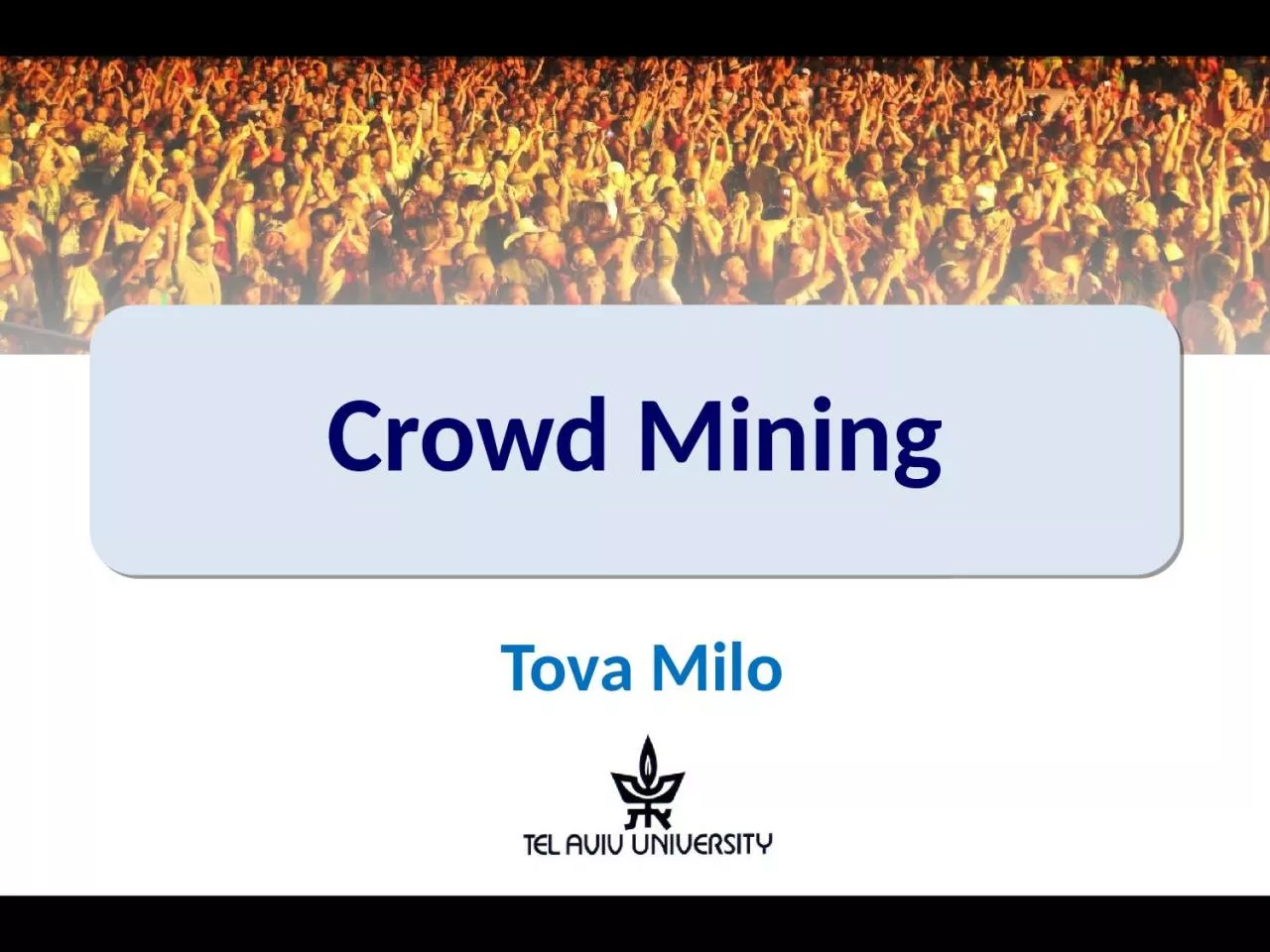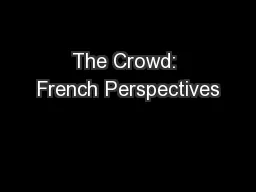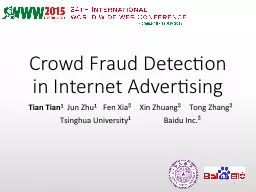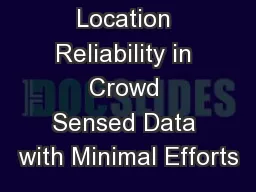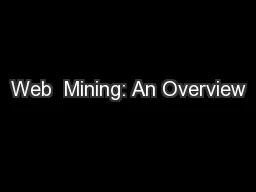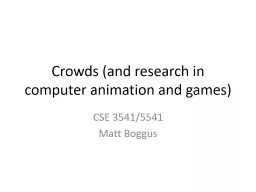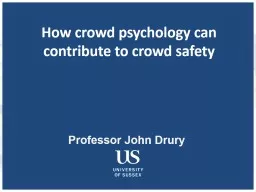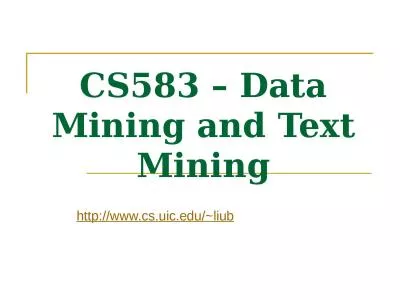PPT-Crowd Mining Tova Milo The engagement of crowds of Web users for data procurement
Author : holly | Published Date : 2022-07-13
1012013 2 Background Crowd Data sourcing 2 Crowd Mining Crowdsourcing Challenges or shameless selfadvertisement What questions to ask SIGMOD13 VLDB13
Presentation Embed Code
Download Presentation
Download Presentation The PPT/PDF document "Crowd Mining Tova Milo The engagement o..." is the property of its rightful owner. Permission is granted to download and print the materials on this website for personal, non-commercial use only, and to display it on your personal computer provided you do not modify the materials and that you retain all copyright notices contained in the materials. By downloading content from our website, you accept the terms of this agreement.
Crowd Mining Tova Milo The engagement of crowds of Web users for data procurement: Transcript
Download Rules Of Document
"Crowd Mining Tova Milo The engagement of crowds of Web users for data procurement"The content belongs to its owner. You may download and print it for personal use, without modification, and keep all copyright notices. By downloading, you agree to these terms.
Related Documents

